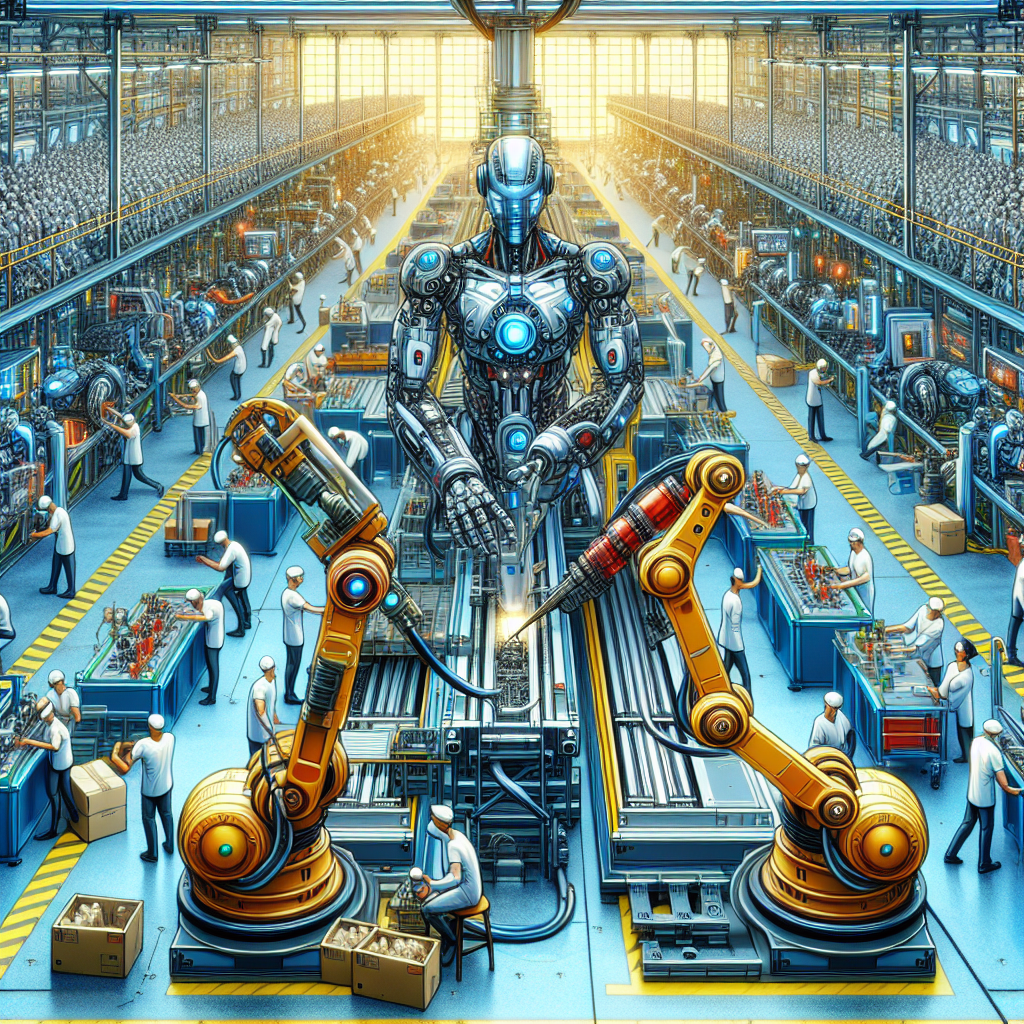The Future of Human-Machine Collaboration in Manufacturing
In recent years, the manufacturing industry has seen a significant shift towards automation and the integration of advanced technologies such as artificial intelligence, robotics, and the Internet of Things (IoT). This has led to the emergence of a new era in manufacturing where humans and machines are working together in unprecedented ways. This trend is expected to continue and evolve in the coming years, giving rise to a new paradigm of human-machine collaboration in manufacturing.
One of the key drivers of this shift towards human-machine collaboration in manufacturing is the increasing complexity and customization of products. As consumer demands for personalized products continue to grow, manufacturers are faced with the challenge of producing a wide variety of products in small batch sizes and short lead times. This requires a high level of flexibility and agility in manufacturing processes, which can be achieved through the integration of human workers and machines.
Another factor driving the adoption of human-machine collaboration in manufacturing is the need to improve efficiency and productivity. By leveraging the strengths of both humans and machines, manufacturers can optimize their production processes and achieve higher levels of output with lower costs. Machines are well-suited for repetitive and labor-intensive tasks, while humans excel at tasks that require creativity, problem-solving, and decision-making. By combining the capabilities of both, manufacturers can create a more efficient and productive manufacturing environment.
The future of human-machine collaboration in manufacturing is also being shaped by advances in technology. Artificial intelligence and machine learning algorithms are enabling machines to perform more complex tasks and make decisions autonomously. This allows machines to take on a greater role in manufacturing processes, while humans can focus on higher-level tasks that require human judgment and expertise. Robotics technology is also advancing rapidly, with the development of more dexterous and flexible robots that can work alongside humans in manufacturing environments.
One of the key areas where human-machine collaboration is expected to have a significant impact is in the area of quality control. By using advanced sensors and imaging technologies, machines can detect defects and anomalies in products with greater accuracy and speed than human inspectors. This can help manufacturers improve the quality of their products and reduce the risk of defects reaching the end customer. Humans can then focus on analyzing the data provided by machines and making decisions on how to improve the manufacturing process.
Another area where human-machine collaboration is expected to play a crucial role is in the field of predictive maintenance. By using IoT sensors and predictive analytics, machines can monitor their own performance and detect potential issues before they occur. This can help manufacturers reduce downtime and maintenance costs, as well as extend the lifespan of their equipment. Humans can then use this data to optimize maintenance schedules and make informed decisions on when to perform maintenance tasks.
Overall, the future of human-machine collaboration in manufacturing is bright and full of possibilities. By harnessing the strengths of both humans and machines, manufacturers can create more efficient, flexible, and productive manufacturing processes. This will not only benefit manufacturers in terms of cost savings and improved quality, but also create new opportunities for innovation and growth in the manufacturing industry.
FAQs
Q: What are some examples of human-machine collaboration in manufacturing?
A: Some examples of human-machine collaboration in manufacturing include the use of cobots (collaborative robots) that work alongside human workers on the factory floor, the integration of AI algorithms in production processes to optimize efficiency and quality, and the use of IoT sensors for predictive maintenance of equipment.
Q: How can human-machine collaboration benefit manufacturers?
A: Human-machine collaboration can benefit manufacturers in several ways, including improved efficiency and productivity, higher quality products, reduced downtime and maintenance costs, and the ability to produce a wider variety of products in small batch sizes.
Q: What are some challenges to implementing human-machine collaboration in manufacturing?
A: Some challenges to implementing human-machine collaboration in manufacturing include the high cost of implementing advanced technologies, the need for retraining of workers to adapt to new technologies, concerns about job displacement due to automation, and the potential for security risks in interconnected manufacturing systems.

